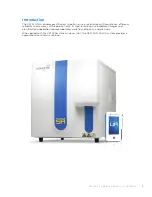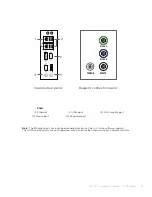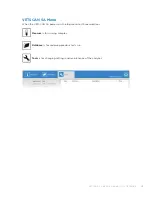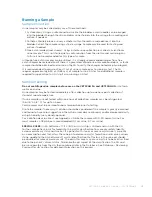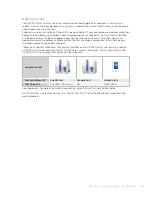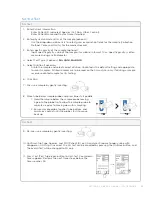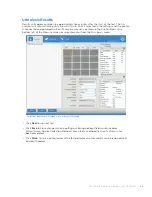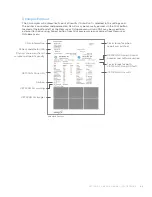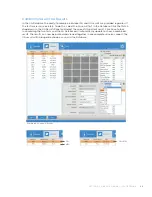
VETSCAN SA USER’S MANUAL
v
1.1 SOFTWARE
|
1 5
Running a Sample
Sample Collection
Urine samples may be collected by any of these methods:
1. Cystocentesis: Using an ultrasound to visualize the bladder, a small needle can be imaged
into the bladder through the skin and draw urine sterilely into the syringe for sampling and
culture, if needed.
2. Catheter: Sterilely place a urinary catheter within the urethra and advance it into the
bladder. Collect the sample using a sterile syringe. Sample may be used for testing and
culture if needed.
3. Free catch/voided (mid-stream): Using a sterile urine collection jar, collect a mid-stream
urine sample. This is not sterile due to contamination from the urethra and sexual organs.
Culture is not recommended for this type of sample.
Although free catch samples can be utilized, it is strongly recommended images from free
catch samples be reviewed and if there is a great deal of bacteria or amorphous debris, a sterile
sample should be obtained and re-run on the SA to verify the changes noted are physiological.
It is recommended to acquire at least 1 mL of urine sample prior to running a test. The SA
requires approximately 650
µ
L (0.65 mL) of sample to run a SA test and additional sample is
required for application to UA strip if also running a UA test.
Sample Handling
Do not centrifuge urine samples before use on the VETSCAN SA and VETSCAN UA.
Use fresh,
well mixed urine.
Urine samples may be tested immediately after collection up to one hour post collection, if
stored at room temperature.
If urine samples are not tested within one hour of collection, samples may be refrigerated
(36-46 °F, 2-8 °C) for up to 4 hours.
Cold samples must be warmed to room temperature prior to testing.
Dilute the sample if necessary. A dilution should be considered if the sample is grossly examined
and found to have color suggestive of hematuria (red, dark red, brown) and/or decreased clarity
or high turbidity (very cloudy, opaque).
For a dilution decision chart, see Appendix J. Dilute the sample with 0.9% normal saline. For
most samples, a 1:8 dilution is recommended (0.1 mL urine, 0.7 mL saline).
SPECIAL CASES:
In SA Software v1.1, if a UA10 or UA14 strip is utilized and run with the SA
for the same patient, pH is factored into the crystal classification to more accurately identify
calcium oxalate crystals and struvites. If a patient with stones or severe crystalluria is currently
on a prescription diet that alters the urine pH to decrease crystal formation or dissolve a urinary
stone, update to the SA Software v1.1 crystal identification that factors in the urine pH should
be disabled for more accurate results. The pH in this case may cause crystals to be misclassified
due to the patient’s clinical status. To disable the pH aspect of the classification, the SA must
be run separately from the UA then combined later in the Database. See Database – Reviewing
Previous Results section for detailed information on this process.






